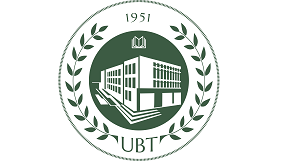BLERTA LAZE, ARTA LUGAJ, ANILA MITRE
Department of Biology, Faculty of Technical Sciences, University “Ismail Qemali”, Vlora, Albania
Department of Biology, Faculty of Natural Sciences, University of Tirana, Tirana, Albania
* Corresponding author E-mail: lazeblerta@gmail.com
Abstract
Aim of investigation: Comparison of an electrochemiluminescence technique (ECL, applied in Cobas 6000 instrument) and an enzyme-linked immunosorbent assay (ELISA, applied in CHORUS instrument) for early diagnosis of Toxoplasma gondii and cytomegalovirus infections in pregnant women. Medical diagnostic is working to determine the most sensitive techniques required for diagnosis of these pathogens, in the framework of which is developed this scientific work. This is very important due to their multiple fetal infections during pregnancy.
Methods: ECL and ELISA techniques are used to detect anti-toxoplasma IgM and anti-cytomegalovirus IgM antibodies in pregnant women, during the first trimester of pregnancy. 200 samples were analyzed with both techniques and sensitivity and specificity are evaluated for each of them.
Results: ECL technique has resulted in higher sensitivity and specificity (98%-100%), while ELISA (CHORUS) technique has resulted in lower sensitivity and specificity (86.7%-97.3%).
Conclusion: Analysis Analysis of the results confirmed the usefulness of ECL technique for early diagnosis of Toxoplasma gondii and cytomegalovirus infections in pregnant women. Anyway, for diagnostic purposes, the results should always be assessed in conjuction with the patient’s medical history and other clinical examinations.
Keywords: Electrochemiluminescence; ELISA; Cytomegalovirus; Toxoplasma gondii; sensitivity; specificity

